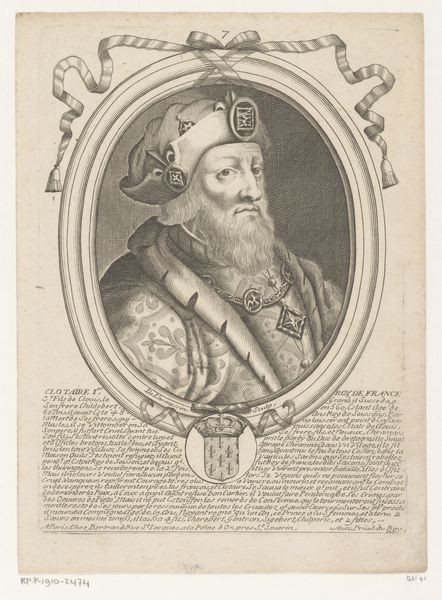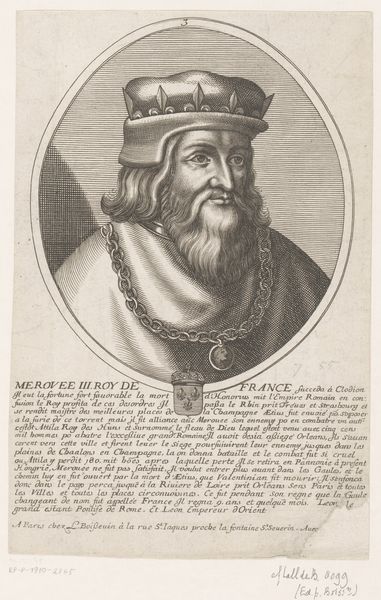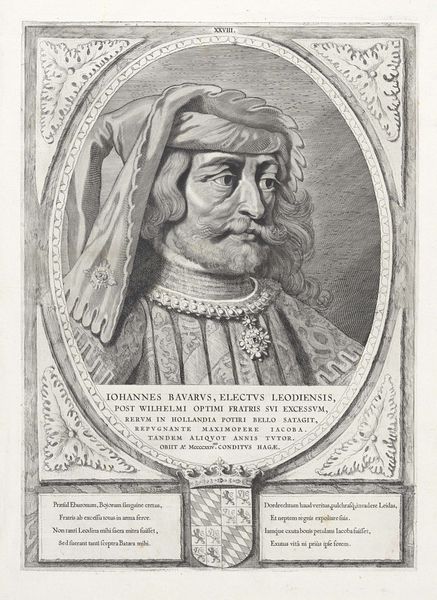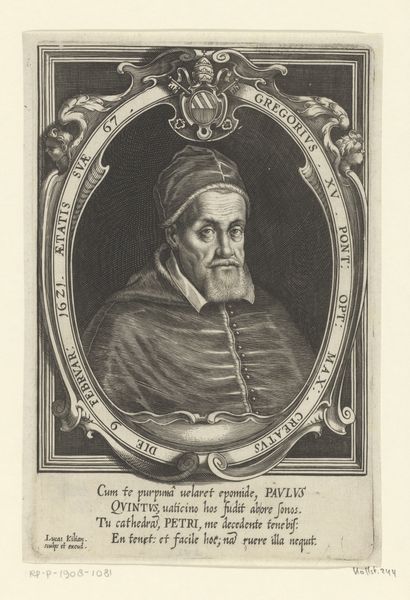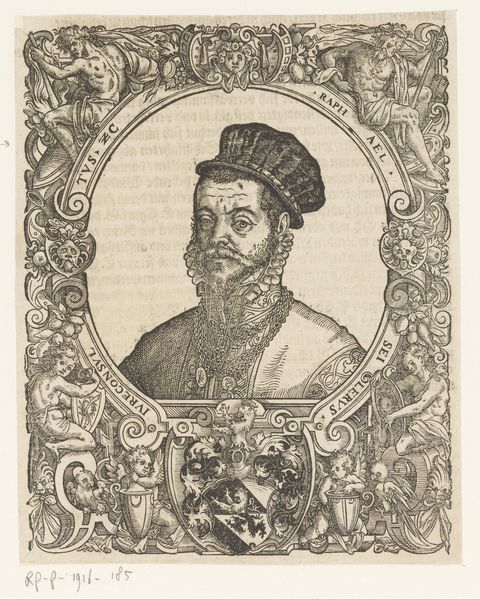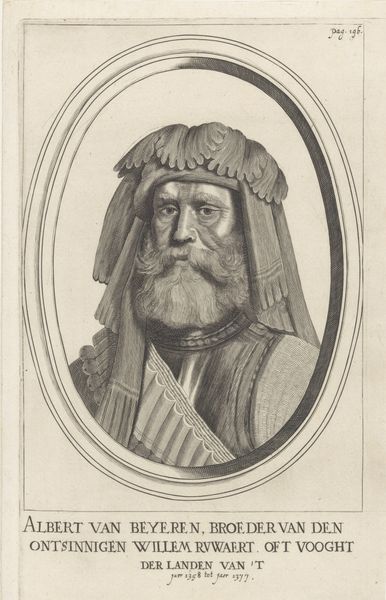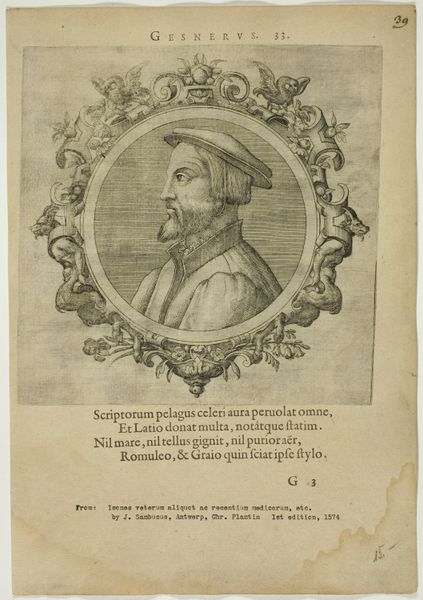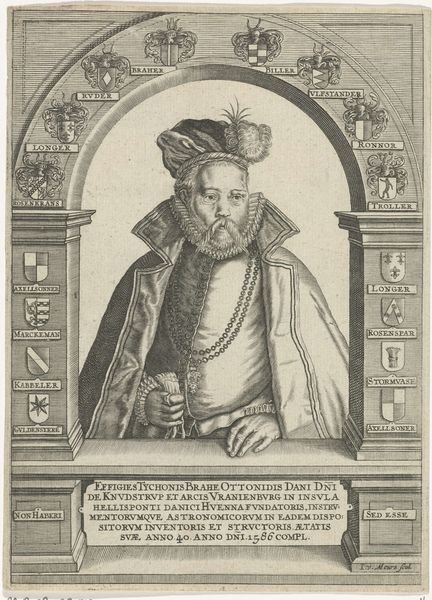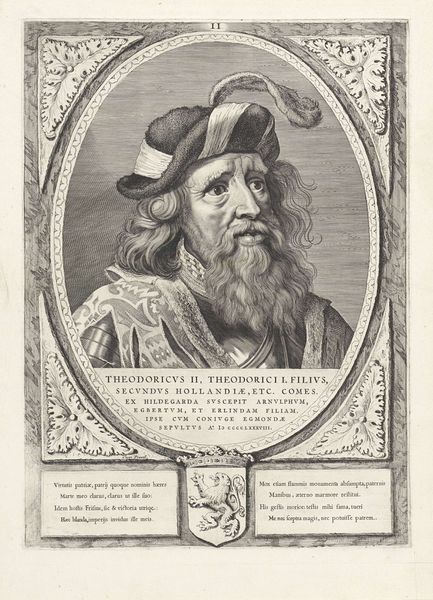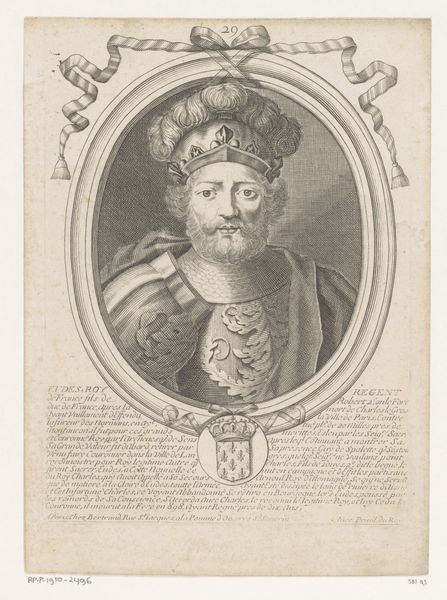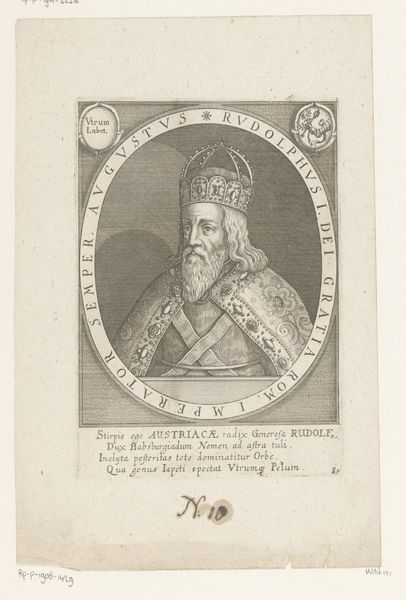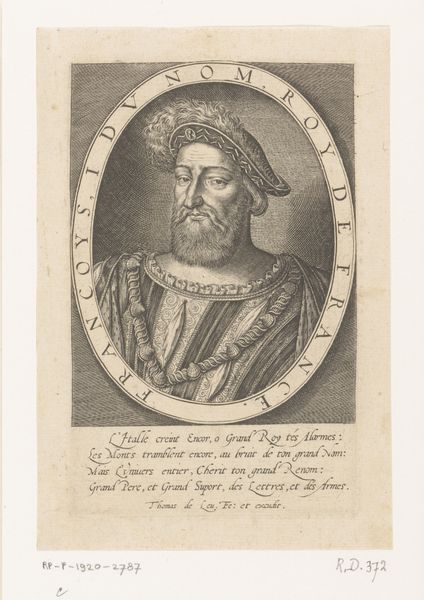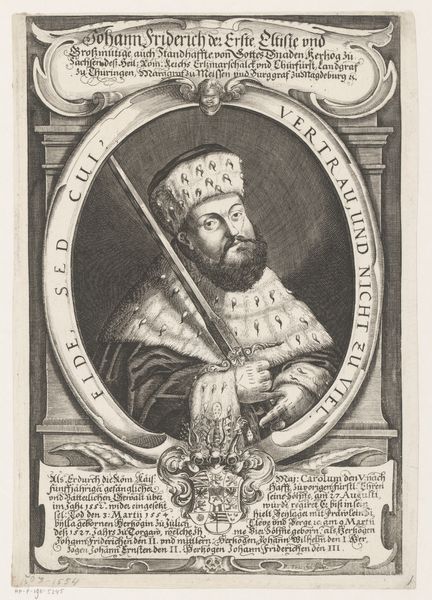
William I, from Principes Hollandiae, Zelandiae, et Frisiae 1650
0:00
0:00
drawing, print, paper, engraving
#
portrait
#
drawing
#
dutch-golden-age
# print
#
paper
#
history-painting
#
engraving
Dimensions: 402x293 mm (plate); 504x387 mm (sheet)
Copyright: Public Domain
Curator: We're looking at a 1650 print by Cornelis Visscher, titled "William I, from Principes Hollandiae, Zelandiae, et Frisiae." It’s currently housed at The Art Institute of Chicago. What's your initial impression? Editor: The detail is astonishing. Just look at the rendering of textures – the soft folds of his turban, the glint of light on the jeweled clasp, the almost palpable roughness of his beard. It's captivating, especially for a print. Curator: Indeed. Visscher was a master engraver. What's particularly interesting here is the contextualization of William I within a historical and political framework. This print was part of a series depicting the counts of Holland, solidifying their legacy. Notice the Latin inscriptions; they highlight William's lineage and achievements. It serves as a powerful statement of authority and historical continuity, created during a time of political maneuvering. Editor: Yes, but stripped of its historical significance, the piece remains striking purely on a visual level. Observe the use of the oval frame, decorated with foliage, it encloses the portrait. Visscher directs the viewer's focus inwards, prioritizing the subject's facial expression. The play of light and shadow accentuates William’s features creating depth and a strong sense of presence. It is these design qualities that invite sustained viewing. Curator: I agree, though the deliberate choice to portray William in what appears to be orientalist attire does contribute to how the viewer perceives this piece. He may have wanted to associate William I with traits of power and expansionism as Islam at the time was considered very powerful. It would be insightful to consider the visual politics at play. Editor: While the intent adds meaning to the piece, that doesn’t alter my understanding of his command of line and form, that gives the engraving so much life, so much energy. It's an admirable demonstration of the engraver’s artistic ability, which is still affecting to a modern viewer. Curator: An engraving is indeed a democratic art form. Prints allow for a wide distribution of images of this caliber, which in turn contributes to the formation of political opinion on rulers of old. The print is a political instrument. Editor: A very persuasive, yet visually striking piece. I may now consider engravings in a new light, beyond the lines that they use to create shapes, shadows and ultimately depth, a demonstration of what images can accomplish.
Comments
No comments
Be the first to comment and join the conversation on the ultimate creative platform.

